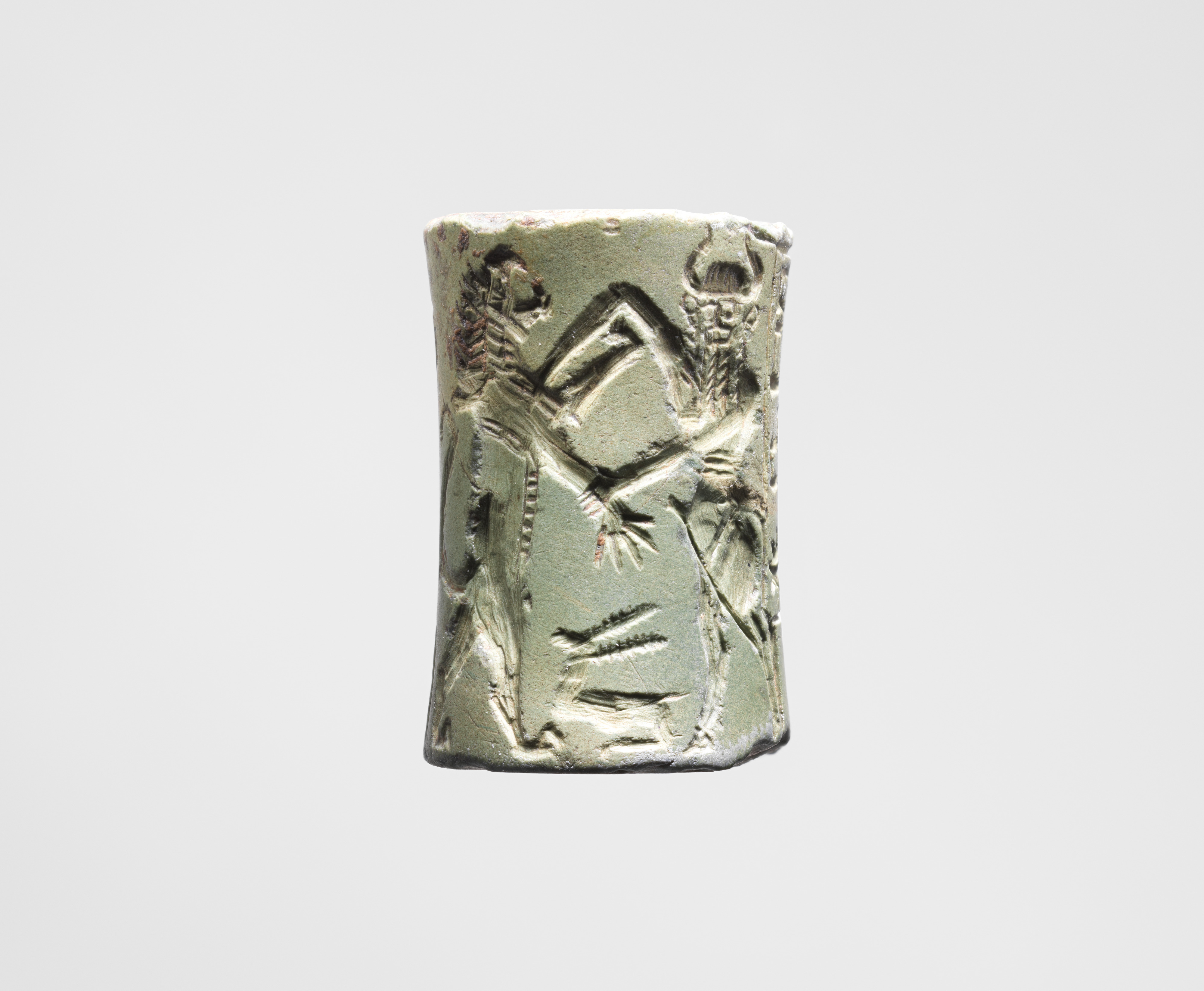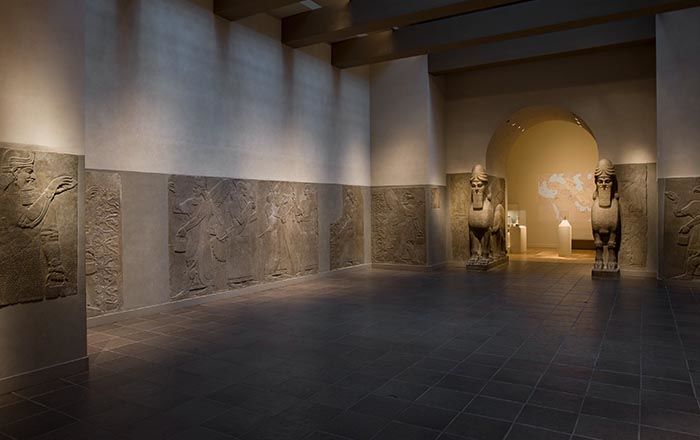Cylinder seal and modern impression: bull-man combatting lion; nude hero combatting water buffalo; inscription
Not on view
Contests between heroes and animals first appeared in cylinder seals in the late fourth millennium B.C., and by the middle of the third millennium B.C., the combatants, which might include mythological opponents, had assumed heroic status. The contest was a favorite subject during the Akkadian period, where it possibly represents the contrast and ever-present struggle between the forces of nature.
A standing nude bearded hero with five visible sidelocks of hair (the traditional sixth curl is hidden by his raised right arm) grasps a water buffalo that is rearing on its hind legs. The head of the water buffalo is pushed back by the hero's right hand. The animal's wide horns are displayed frontally, as found on contemporary stamp seals from the Indus Valley where the water buffalo was native. Such imagery demonstrates cultural interaction resulting from trade and possibly diplomatic connections between the Akkadian empire and the Indus Valley (Harappan) civilization. Between the hero and the water buffalo is a small female in a long robe, perhaps holding a vessel. The hero's ally in the contest scene is a bull-man, shown full-face with the horns, ears, and lower body of a bull. In Akkadian-period contest scenes, the bull-man is almost invariably, as here, in conflict with a lion. A horned animal lies between the two combatants. A two-column cuneiform inscription names the seal owner as Ishri-ilum.
This image cannot be enlarged, viewed at full screen, or downloaded.
This artwork is meant to be viewed from right to left. Scroll left to view more.





